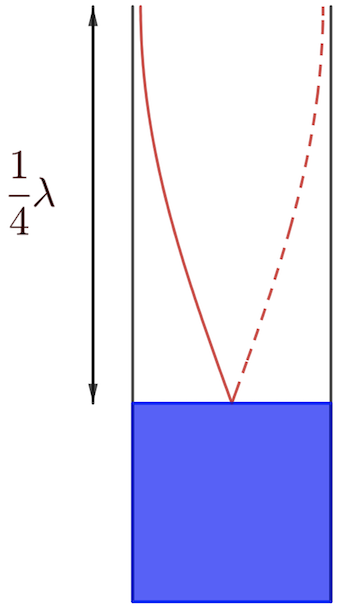Outline for Measuring the Speed of Sound Using a Tuning Fork and a Hollow Pipe Submerged in Water:
- Equipment Setup:
- Obtain a tuning fork of known frequency and a hollow pipe that can be partially submerged in a column of water.
- The pipe should be open at the top and closed at the bottom by the water surface.
- Strike the Tuning Fork:
- Strike the tuning fork on a soft surface to make it vibrate. This produces a sound wave of a specific frequency, known as the fundamental frequency of the tuning fork.
- Submerge the Hollow Pipe:
- Submerge the hollow pipe vertically in a large container filled with water. The length of the air column inside the pipe can be adjusted by raising or lowering the pipe in the water.
- Create Resonance:
- Hold the vibrating tuning fork above the open end of the pipe. Slowly raise or lower the pipe in the water while listening for the loudest sound, which indicates resonance.
- Resonance occurs when the length of the air column in the pipe is such that it forms a standing wave with the frequency of the tuning fork. This usually happens when the length of the air column is a quarter of the wavelength of the sound wave.
- Measure the Air Column Length:
- When resonance is achieved (indicated by a significant increase in sound amplitude), measure the length of the air column from the water surface to the top of the pipe. This length corresponds to one-quarter of the wavelength of the sound wave in air.
- Calculate the Wavelength:
- Multiply the measured length by 4 to determine the wavelength of the sound wave.
- Determine the Speed of Sound:
- Use the formula Speed of Sound = Frequency × Wavelength ($v = f\lambda$) to calculate the speed of sound in air. The frequency is given by the tuning fork, and the wavelength is obtained from the previous step.

Explanation:
The speed of sound in air can be measured using the relationship between the frequency of the sound wave and its wavelength, which are connected by the speed of sound. When the tuning fork vibrates, it creates sound waves that travel through the air. When these waves enter the hollow pipe, they reflect off the water surface, and at certain lengths, they create a resonance condition, amplifying the sound. The resonant length corresponds to one-quarter of the wavelength because the pipe is effectively closed at the bottom (by the water), forming a node at the water surface and an antinode at the open end. By measuring this length and knowing the frequency of the tuning fork, the speed of sound can be calculated.


